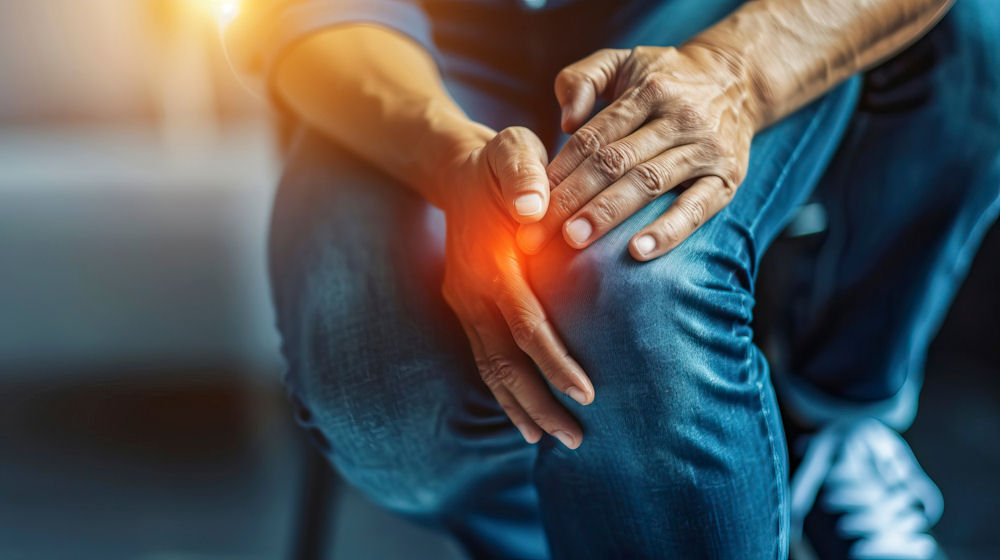Chronic Pain and Addiction: What You Should Know
Chronic pain is a health issue that affects millions of individuals worldwide. It can be debilitating and significantly impact a person’s quality of life. Unfortunately, chronic pain often goes hand in hand with the risk of developing addiction issues. It is crucial to understand the link between chronic pain and addiction to effectively address and minimize the risks associated with both.
At Immersive Recovery Center in Encinitas, California, our men’s addiction treatment center offers treatment programs and behavior therapy to help our clients recover and maintain sobriety.

Understanding the Link Between Chronic Pain and Addiction
Chronic pain is a complex and challenging condition that affects millions of individuals worldwide. It is defined as pain that persists for more than three months, even after the initial injury or condition has healed. The experience of chronic pain can be debilitating, impacting various aspects of a person’s life, including their physical health, mental well-being, and overall quality of life.
Numerous factors can contribute to the development of chronic pain, including injuries, medical conditions, and even psychological factors such as stress and anxiety. The management of chronic pain often involves a multidisciplinary approach, combining medical treatments, physical therapy, and psychological interventions to help chronic pain patients cope with their symptoms and improve their quality of life.
In addition to these approaches, medications for neuropathic pain, such as pregabalin, gabapentin, and duloxetine, are often used to treat conditions like diabetic neuropathy and sciatica.
However, one common challenge in the treatment of chronic pain is the potential risk of addiction to pain medications, particularly opioid analgesics. Opioid therapy involves the use of powerful pain relievers that work by binding to specific receptors in the brain, blocking pain signals, and providing a sense of relief. While these medications can be effective in managing pain, they also carry a high risk of addiction due to their impact on the brain’s reward system.
Individuals with chronic pain who rely on opioids to alleviate their symptoms may develop a tolerance to the medication over time, requiring higher doses to achieve the same level of pain relief. This tolerance can quickly escalate into dependence and addiction, as the individual’s brain becomes accustomed to the presence of the drug.
As a result, many individuals find themselves caught in a cycle of escalating opioid use, experiencing cravings, withdrawal symptoms, and drug-seeking behaviors that can have devastating consequences on their health and well-being.
How Chronic Pain Can Lead to Addiction Issues in Chronic Pain Patients
The persistent nature of chronic pain can take a toll on an individual’s mental and emotional well-being, leading to an increased susceptibility to addiction. Chronic low back pain (LBP) is particularly impactful, often associated with both neuropathic and nociceptive pain mechanisms, and can significantly affect mental well-being. Dealing with persistent pain can be incredibly distressing, causing anxiety, depression, and a sense of hopelessness. In such circumstances, individuals may turn to drugs or binge drinking alcohol as a coping mechanism.
Furthermore, the physical discomfort associated with chronic pain can hinder daily activities and impact social relationships. This can contribute to feelings of isolation and further exacerbate the emotional burden, increasing the risk of self-medication as a means of escape.
It is essential to address the underlying emotional components of chronic pain to minimize the risk of addiction. For pain patients, implementing strategies such as cognitive-behavioral therapy, mindfulness techniques, and support groups can help individuals develop healthier coping mechanisms and gain a better understanding of their pain’s psychological impact.
Moreover, chronic pain not only affects the individual experiencing it but also has ripple effects on their family and loved ones. Family members may struggle to understand the extent of the pain their loved one is going through, leading to strained relationships and feelings of helplessness.
Additionally, the financial burden of managing chronic pain can be overwhelming. Medical bills, prescription costs, and potential loss of income due to decreased productivity can create significant stress for individuals already grappling with physical and emotional pain. This financial strain may further push individuals towards addictive behaviors as they seek relief or a temporary escape from their challenging circumstances.
Reducing the Risk of Addiction in Pain Management
The risk of addiction to pain medications can be mitigated by adopting strategies aimed at minimizing their use and reliance. It starts with healthcare providers utilizing a multimodal approach to pain management, combining various treatment modalities tailor-fitted to each patient’s specific needs.
This approach may involve non-opioid pain medications, such as NSAIDs (nonsteroidal anti-inflammatory drugs) or antidepressants, physical therapy, acupuncture, and other non-pharmacological interventions. By diversifying pain management techniques, the reliance on opioids can be reduced, decreasing the likelihood of addiction. However, opioid misuse remains a significant concern, necessitating careful pre-treatment screening and ongoing monitoring to ensure safety and effectiveness.
Furthermore, patient education plays a crucial role in reducing the risk of addiction to pain medications. It is essential for healthcare providers to thoroughly educate patients about the potential risks and side effects of prescription opioids, as well as the importance of adhering to prescribed dosages and treatment plans. Patients should be empowered to ask questions, voice concerns, and actively participate in decision-making regarding their pain management.
Additionally, regular monitoring and follow-up appointments are key components in the prevention of opioid addiction. Healthcare providers should closely monitor patients’ progress, reassess pain levels, and adjust treatment plans as needed. By maintaining open communication and a proactive approach to pain management, the risk of addiction can be significantly reduced, promoting better outcomes for patients in need of pain relief.

Chronic Pain and Opioid Misuse
Opioid abuse is a pressing concern when it comes to chronic pain management. Misuse of these powerful drugs can lead to severe consequences, including overdose, death, and drug abuse. Recognizing the signs of opioid abuse is crucial for individuals, their loved ones, and healthcare professionals. Substance abuse is another critical issue, and early intervention is essential to manage and treat it effectively.
Common signs of opioid abuse include changes in behavior, such as increased secrecy or social isolation, a decline in work or academic performance, neglected personal hygiene, and noticeable financial struggles. Physical signs may include pinpoint pupils, drowsiness or nodding off, and sudden weight loss.
If you or someone you know is demonstrating these signs, seeking professional help is essential. Early intervention and appropriate treatment can prevent further harm and help break the cycle of addiction.
Mitigation Strategies for Opioid Addiction
For individuals already struggling with opioid addiction, there are several mitigation strategies available to assist in the recovery process. Medication-assisted treatment (MAT) is a widely recognized approach that combines medications such as methadone or buprenorphine with counseling and behavioral therapies for treating patients.
These medications help suppress opioid cravings and withdrawal symptoms, enabling individuals to focus on their recovery journey. Counseling and therapy provide essential support, addressing the psychological aspects of addiction and equipping individuals with valuable coping skills for the challenges ahead.
It is important to note that MAT should be tailored to each individual’s needs, and treatment plans should be regularly evaluated and adjusted accordingly.
1. Reducing the Risk of Drug Overdose
One of the most devastating consequences of addiction is the risk of a drug overdose. This risk is exceptionally high for individuals using opioids. To minimize the risk of overdose, it is crucial to raise awareness and educate both individuals with chronic pain and healthcare providers about proper opioid therapy.
Training programs and educational campaigns can help ensure the proper prescribing and use of opioids. Healthcare professionals should engage in careful patient assessment, properly screen for addiction risk factors, and regularly monitor patients’ responses to medications to prevent opioid misuse.
Additionally, individuals using opioids should be educated about the signs of overdose and equipped with opioid antagonists, such as naloxone, to be administered in case of an emergency. Such measures can significantly reduce the tragic consequences of unintentional overdoses.
2. Minimizing the Risk of Addiction
To minimize the risk of addiction, it is crucial to adopt a comprehensive approach that addresses both physical and psychological aspects of chronic pain. Healthcare providers should prioritize open communication with patients, providing education and realistic expectations about pain management options.
Engaging in non-drug therapies to treat pain, including physical therapy, acupuncture, chiropractic care, and alternative treatments like mindfulness-based stress reduction or yoga, can also help individuals take an active role in their pain management and reduce reliance on medications.
Additionally, promoting healthy lifestyle choices, such as regular exercise, proper nutrition, and quality sleep, can improve overall well-being and potentially alleviate some pain symptoms.
3. Reducing Overprescribing
To address the issue of overprescribing pain medications, healthcare providers should adhere to evidence-based guidelines and implement robust measures to prevent unnecessary or excessive opioid prescriptions, particularly prescription opioids. This includes properly assessing pain levels, considering alternative treatments, and utilizing prescription drug monitoring programs to monitor patients’ medication history.
Furthermore, fostering collaboration between healthcare professionals, policymakers, and regulatory authorities is essential. This collaboration can help establish standardized protocols and implement regulations that promote responsible opioid prescribing practices.
Treatment for Drug Addiction at Immersive Recovery
At Immersive Recovery, we understand the seriousness of drug addiction and its impact on individuals’ lives. Our men’s rehab center in California offers compassionate and evidence-based treatment programs for those struggling with addiction.
Our approach combines various therapeutic modalities, including individual counseling, group therapy, and experiential activities, to address the physical, mental, and emotional aspects of addiction. We create personalized treatment plans that focus on each individual’s unique needs and circumstances, including chronic pain patients, promoting long-term recovery and a healthier, more fulfilling life.
When it comes to treating substance use disorders, we provide a continuum of care that addresses the causes and impact of addiction.
Drug and Alcohol Detox
At Immersive Recovery, our detox program provides a safe and supervised environment for individuals beginning their journey to recovery. This critical first step helps to cleanse the body of substances while minimizing withdrawal symptoms under medical supervision.
Medication-Assisted TreatmentRisk of Addiction
Our MAT program integrates medications with comprehensive counseling and behavioral therapies. Designed to address the physical and psychological aspects of addiction, MAT aims to reduce cravings and withdrawal symptoms, making the recovery process more manageable.
Outpatient Program
Our outpatient program offers flexible treatment options for individuals who require ongoing support but do not need intensive residential care. This program allows patients to continue their daily responsibilities, such as work or school while attending scheduled therapy sessions and group meetings.
Partial Hospitalization Program
The PHP level of care provides support for those needing more intensive treatment while still maintaining some independence. PHP includes comprehensive therapeutic services, including individual and group therapy, medical monitoring, and life skills training.
Intensive Outpatient Program
Our IOP is designed for individuals who need structured support but can live independently. IOP offers a robust schedule of therapy sessions, educational workshops, and group activities that help reinforce recovery principles.
If you or a loved one is battling addiction, reach out to Immersive Recovery today. Our dedicated team is ready to provide the support and guidance needed to overcome addiction and embrace a brighter future.

Receive Help For Drug Addiction at Our Men’s Rehab Center in California
If you or someone you know is struggling with drug addiction, seeking help is crucial. At our men’s rehab center in California, we offer comprehensive and personalized treatment programs designed to guide individuals toward lasting recovery.
Our experienced team of professionals provides a safe and supportive environment, utilizing evidence-based therapies to address the underlying causes of addiction. From detoxification to aftercare planning, we are committed to assisting individuals in reclaiming their lives from the grips of drug addiction.
We believe that everyone deserves a chance to live a healthy and full life. When addiction is involved, health and wholeness are hard to achieve. This is why we work tirelessly to help the men who come to our facility. We strive to provide compassionate and comprehensive care, working to make a true difference in the lives of each client. So if you’re ready to see a change in your life, now is the time to take the first step. Contact our men’s rehab center in California today and take the first step towards a healthier, substance-free life. Let Immersive Recovery help you today.
